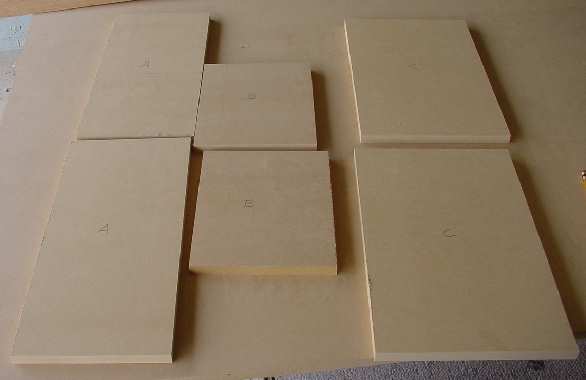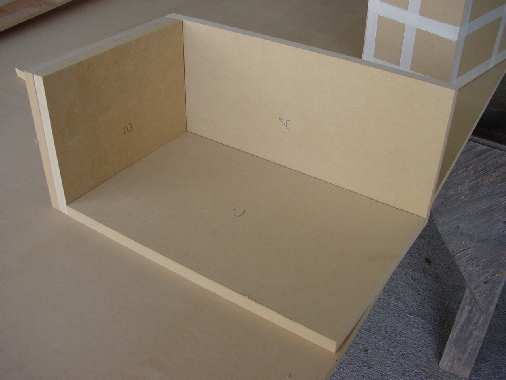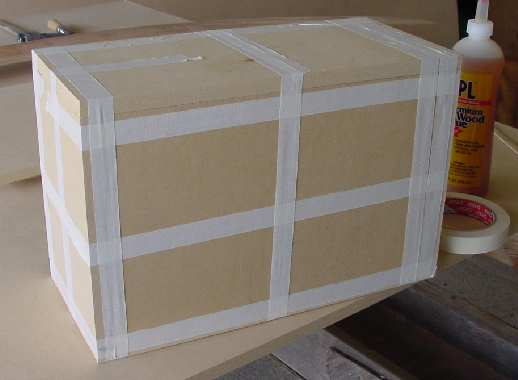Dedicated to Really Cheap Audio Enthusiasts
The objectives of this project are legion:
1 Replace an existing pair of VERY cheap plastic speakers.
2 Use my existing inventory. Because the woofer and tweeter were so inexpensive I purchased 8 pieces of each on impulse.
3 Eliminate (or reduce the size of) the full sheet of ½ in. MDF sitting in my garage. It was in my way.
4 Provide a very easy and low-cost design for neophyte speaker builders.
Based on the output of Abacus, I will get a very flat response with a sealed 7 liter box. The predicted f3dB is 133 Hz, sufficient for use with a subwoofer.
I used Microsoft Works Spreadsheet to do the volume calculations. Using the 0.6 x 1.0 x 1.6 golden rule dimensions yields a box size of 4.62 x 7.7 x 12.32 inches. I didnt want to use the weird fractions, so I adjusted to 5 x 7.5 x 12 inches, close enough for me. This gives a box volume of 0.260 ft.^3, compared to the ideal value 0f 0.247 ft. ^3. I figure the slight rounding up will help accommodate the internal speaker volume, which is very minimal.
The cabinet is made with 1/2 in. MDF with no internal bracing. All the joints are butt-type and glued with polyurethane glue. Prior to beginning assembly, lay the parts out on the bench and label them for east identification. I used A for the baffle and back, B for the small top and bottom pieces, and C for the two sides. See Figure 1.



<<Insert Figure 3. Box glue up, inside view>>
Once you are satisfied that the base is aligned and adequately glued, attach the backside A of to the cabinet. Because you cant inspect the inside of this joint use a liberal amount of glue. Then tape the whole assembly, making sure to pull the masking tape tight across each length. Remember; do not push against either C piece because it is unsupported inside the box. If this happens you must partially disassemble the box to realign the side. The finished taped assembly is shown in figure 4.


Set the first box aside and repeat the above procedures for the second box. Once this box is done both boxes can be clamped as one unit. Be careful not to exert any sideways force with the clamps. See Figure 5. Now is a good time to go watch the Battle Bots marathon on Comedy Central. The boxes will require at least a few hours to dry. If possible leave them alone overnight.